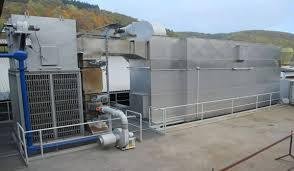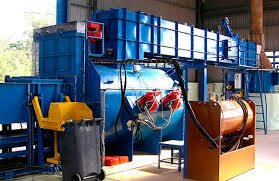- Absorption: Gaseous pollutants are dissolved into the liquid through chemical reactions or physical absorption.
- Impaction: Larger particles in the gas stream collide with the liquid droplets and are captured.
- Condensation: Some pollutants may condense into liquid droplets due to changes in temperature or pressure.
Components:
A typical wet scrubber system consists of the following components:
- Scrubbing Chamber: This is the main enclosure where the gas stream and liquid come into contact for pollutant removal.
- Scrubbing Liquid: Water or a chemical solution is used as the scrubbing liquid. The choice of liquid depends on the specific pollutants and their reactivity. Spray Nozzles: Spray nozzles or atomizers are used to introduce the scrubbing liquid into the gas stream in the form of fine droplets.
- Spray Nozzles: Spray nozzles or atomizers are used to introduce the scrubbing liquid into the gas stream in the form of fine droplets.
- Scrubbing Medium: The scrubbing medium may be a packed bed of materials, such as random packing or structured packing, or a liquid film formed on surfaces, such as trays or plates.
- Mist Eliminators: These devices are used to capture any liquid droplets or mist carried over with the cleaned gas stream before its discharge.






